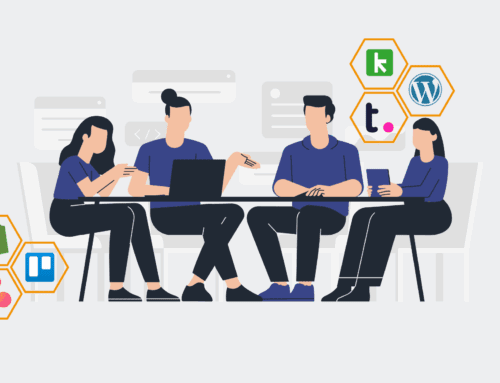A Step-by-Step Guide to Migrating Your Existing Candidate Database to an AI Parser
In today’s competitive talent landscape, efficiency and precision in candidate management are paramount. Manually sifting through thousands of resumes is not only time-consuming but also prone to human error, often leading to missed opportunities. Migrating your existing candidate database to an AI parser offers a transformative solution, automating the extraction and structuring of critical candidate data. This guide will walk you through the essential steps to ensure a smooth, effective migration, empowering your recruitment efforts with enhanced data quality, faster processing, and superior candidate matching capabilities. Embrace the power of AI to convert your historical data into an intelligent, actionable asset.
Step 1: Assess Your Current Database and Define Objectives
Before initiating any migration, a thorough assessment of your existing candidate database is crucial. Understand the types of data you currently hold (e.g., resumes, applications, notes, interview feedback), their formats, and their overall quality. Identify any redundancies, outdated information, or inconsistencies. Concurrently, define clear objectives for the migration. What do you aim to achieve with an AI parser? Is it faster candidate screening, improved search capabilities, better compliance, or reduced manual data entry? Setting measurable goals will guide your selection of an AI parsing solution and inform your data preparation strategy, ensuring the migration aligns with your overarching recruitment and business objectives. This foundational step prevents common pitfalls and establishes a clear path to success.
Step 2: Choose the Right AI Parsing Solution
Selecting an AI parsing solution that aligns with your specific needs and existing tech stack is a critical decision. Evaluate potential tools based on their accuracy in extracting relevant information (skills, experience, education, contact details), their ability to handle diverse resume formats and languages, and their integration capabilities with your Applicant Tracking System (ATS) or CRM. Consider scalability: can the solution handle your current database volume and future growth? Look for features like custom field mapping, data enrichment, and robust API access. A good AI parser should not just extract data, but also standardize and structure it for easy querying and analysis. Engage in demos and trials to assess real-world performance and ensure the chosen solution is a perfect fit for your operational requirements.
Step 3: Prepare Your Data for Migration
The success of your AI parsing migration heavily depends on the quality of your input data. This step involves cleaning, standardizing, and deduplicating your existing candidate database. Remove duplicate records, update outdated contact information, and ensure consistency in formatting wherever possible. While AI parsers are sophisticated, providing them with cleaner data significantly enhances parsing accuracy and reduces post-migration adjustments. Consolidate different file formats into a manageable set if necessary, and identify any sensitive data that might require special handling or anonymization in accordance with data privacy regulations. Investing time in this preparation phase will yield dividends in the form of more accurate parsing results and a more reliable, usable candidate database post-migration, saving considerable effort later on.
Step 4: Configure and Test the AI Parser
Once your data is prepared and your AI parsing solution is selected, the next phase involves configuring the parser and conducting rigorous testing. This typically includes mapping extracted fields from resumes to corresponding fields within your ATS or CRM. Customize parsing rules to prioritize specific information or handle unique data formats common in your industry. Before a full-scale migration, execute small-batch tests using a representative sample of your cleaned database. Scrutinize the parsed output for accuracy, completeness, and correct field mapping. Identify any areas where the parser might be misinterpreting data or missing crucial details. This iterative testing and refinement process is essential to fine-tune the AI parser’s performance and ensure it meets your quality expectations before processing your entire database.
Step 5: Execute the Migration and Post-Migration Validation
With the AI parser configured and thoroughly tested, you are ready to execute the full data migration. A phased approach is often recommended, especially for large databases, to monitor performance and address any unforeseen issues as they arise. During and after the migration, comprehensive validation is critical. Compare a statistically significant sample of parsed records against the original data to verify accuracy and completeness. Check for data integrity, ensuring all essential fields are populated correctly and that no data has been lost or corrupted. Engage key stakeholders in this validation process to gather feedback and confirm that the newly parsed data meets their operational needs. This diligent post-migration check guarantees the integrity and reliability of your new AI-powered candidate database.
Step 6: Integrate with Existing Systems and Automate Workflows
The true power of an AI-parsed database is unlocked through seamless integration with your existing recruitment ecosystem, primarily your ATS or CRM. Establish automated workflows to ensure that newly parsed candidate data flows directly into the appropriate system, triggers follow-up actions, or updates candidate profiles. For example, once a resume is parsed, an automation could categorize the candidate, assign them to a recruiter, or send an automated acknowledgment. Leverage tools like Make.com to connect the AI parser with other critical platforms, creating an interconnected and highly efficient recruitment operation. This integration not only eliminates manual data transfer but also streamlines processes, reducing time-to-hire and enhancing the candidate experience significantly.
Step 7: Train Your Team and Optimize Performance
The final, but ongoing, step is to ensure your recruitment team is fully trained on how to leverage the newly migrated and AI-parsed database effectively. Conduct training sessions on searching, filtering, and utilizing the enriched data to its full potential. Encourage feedback from users on the parser’s accuracy and the overall efficiency of new workflows. AI models benefit from continuous learning; regularly review parsing results, particularly for new or unusual resume formats, and provide feedback to the parser’s provider for ongoing optimization. Establishing a process for regular audits and performance reviews ensures that your AI parsing solution continues to deliver maximum value, adapting to evolving talent acquisition needs and maintaining peak efficiency over time.
If you would like to read more, we recommend this article: 5 AI-Powered Resume Parsing Automations for Highly Efficient & Strategic Hiring








